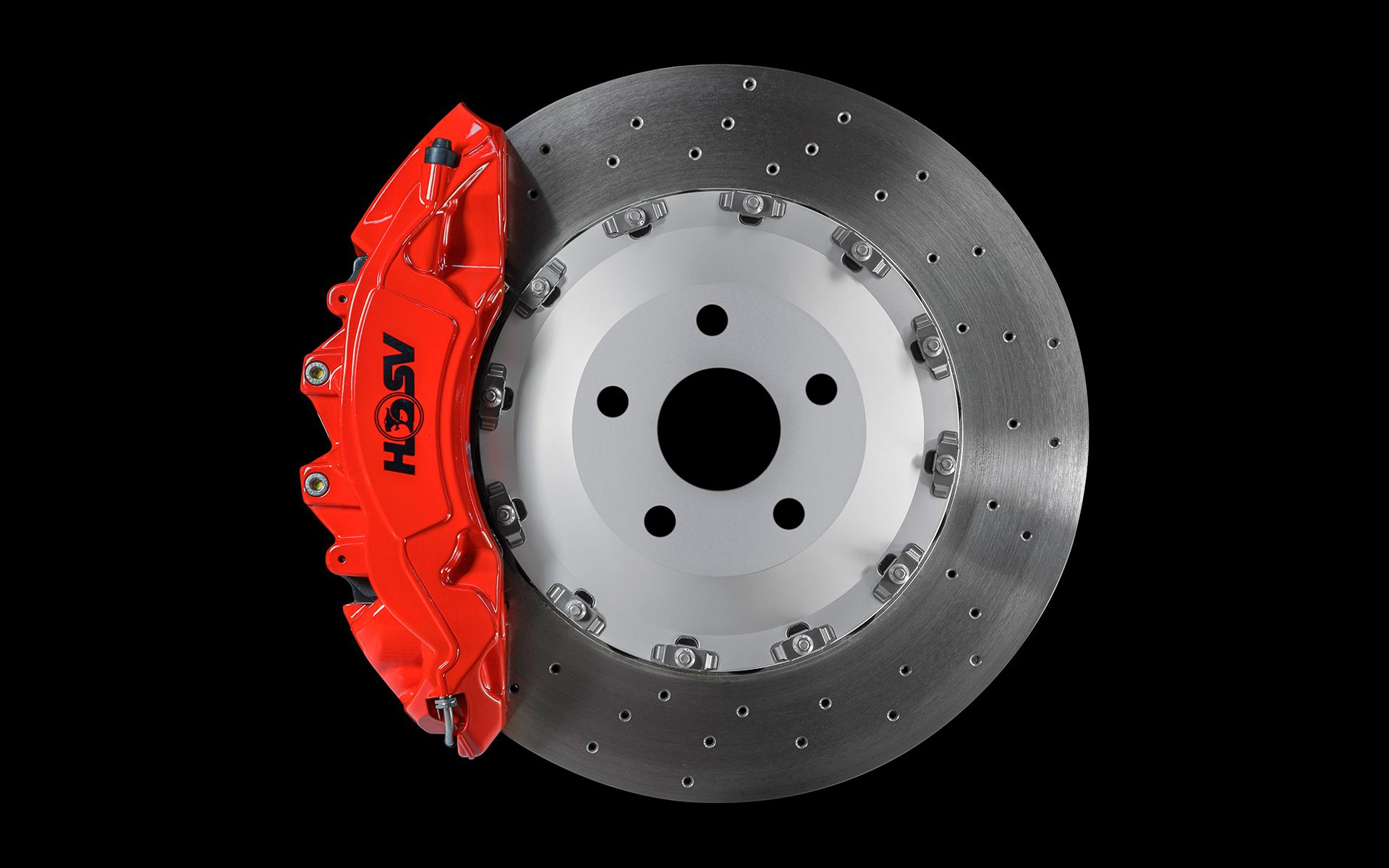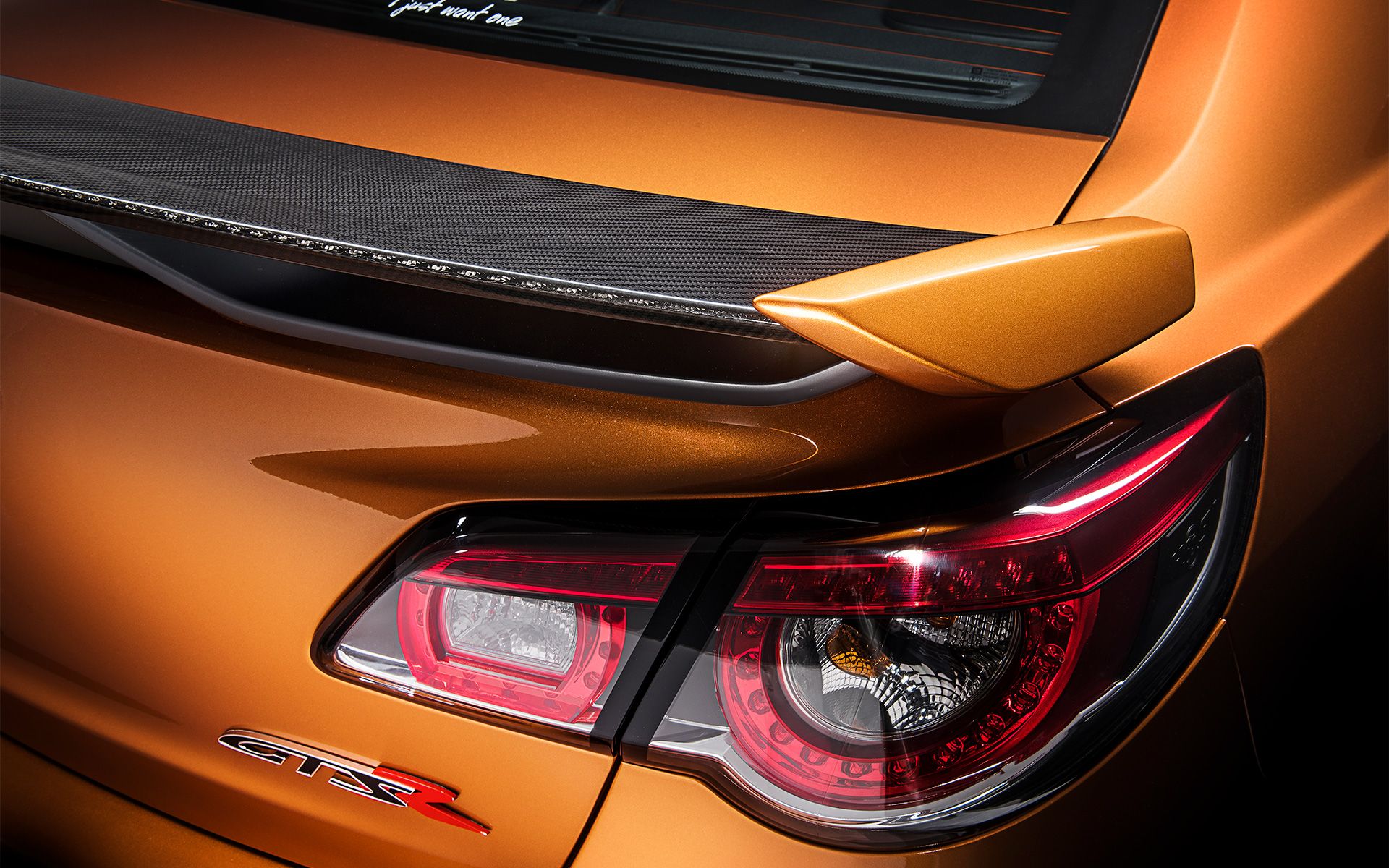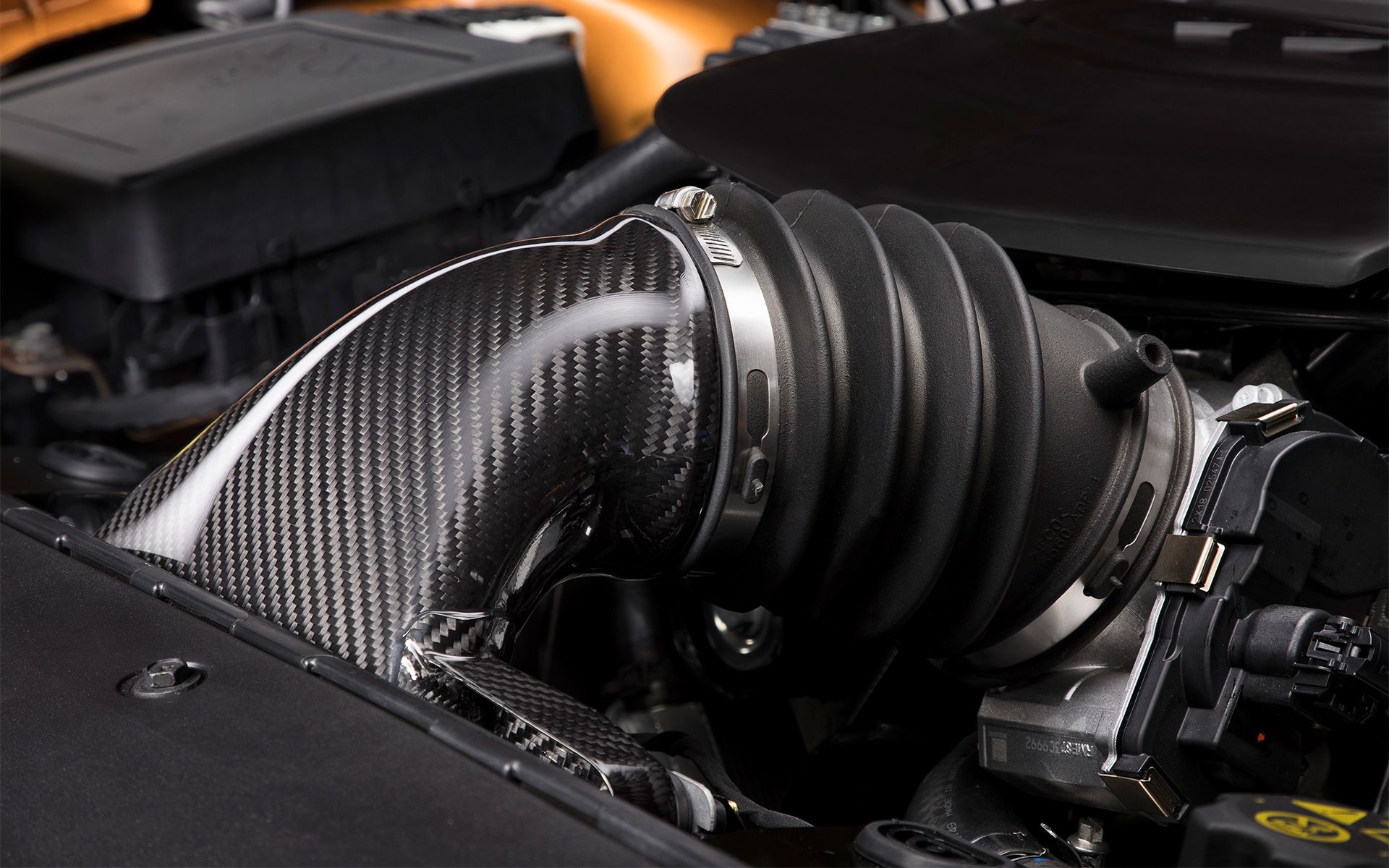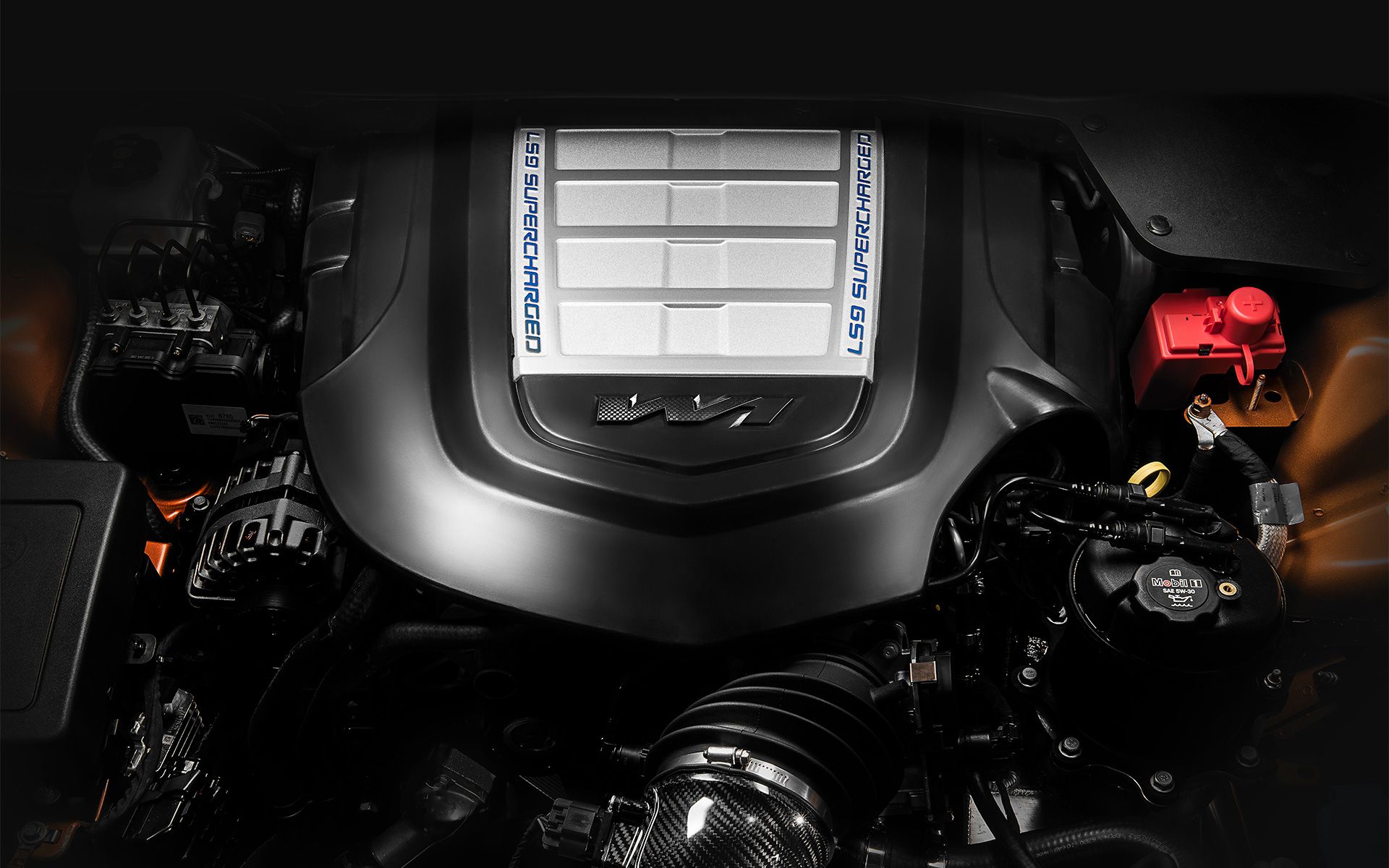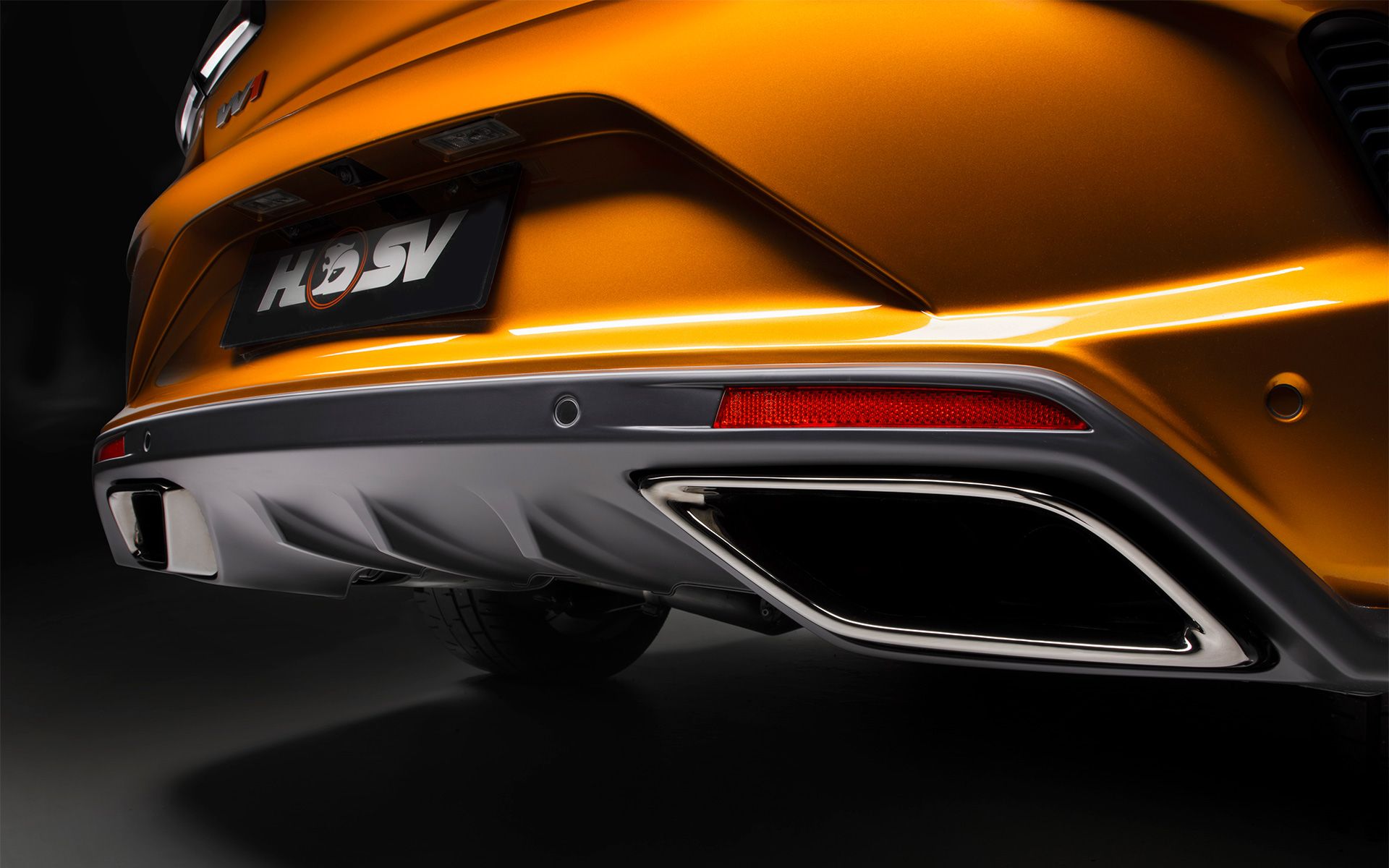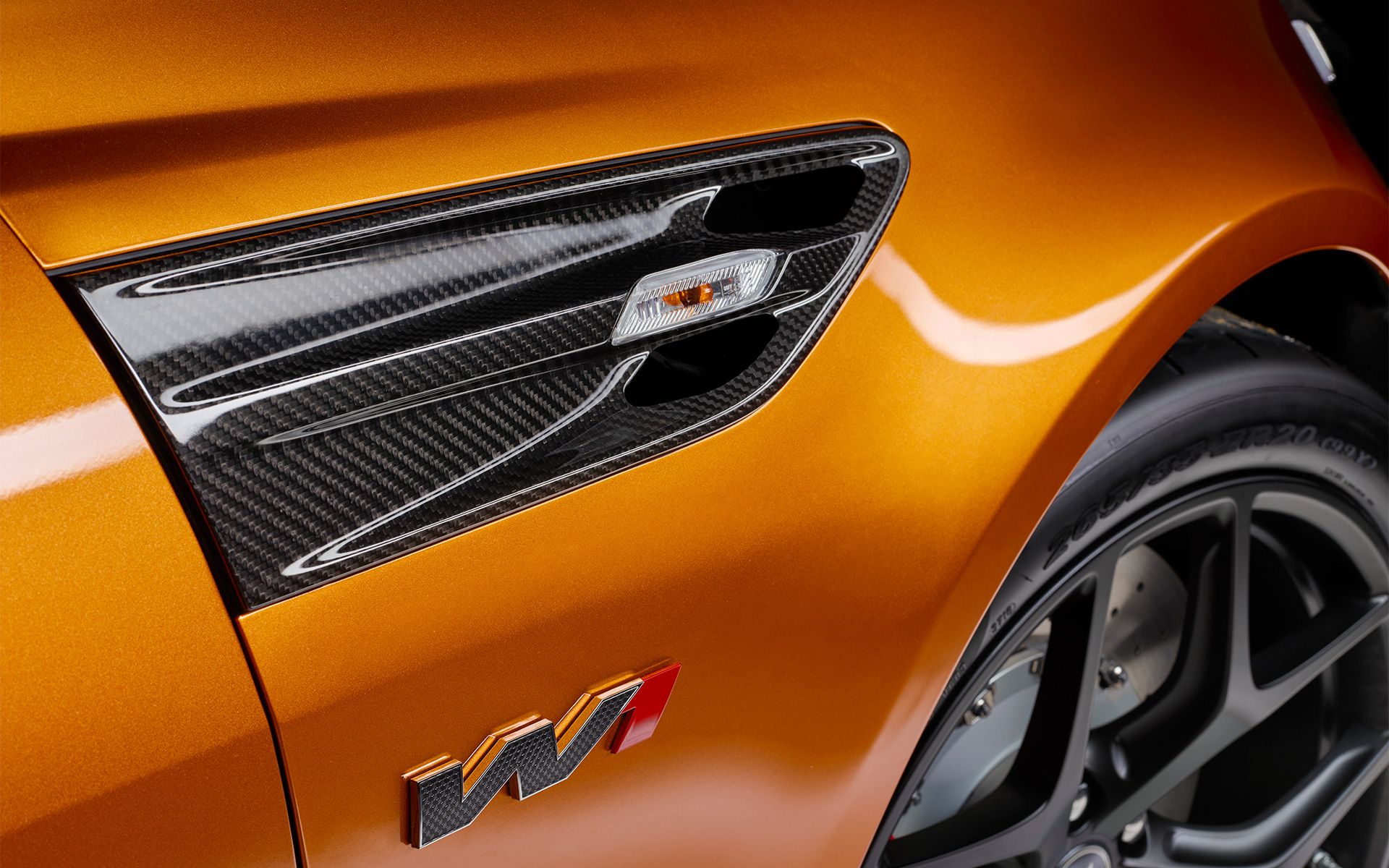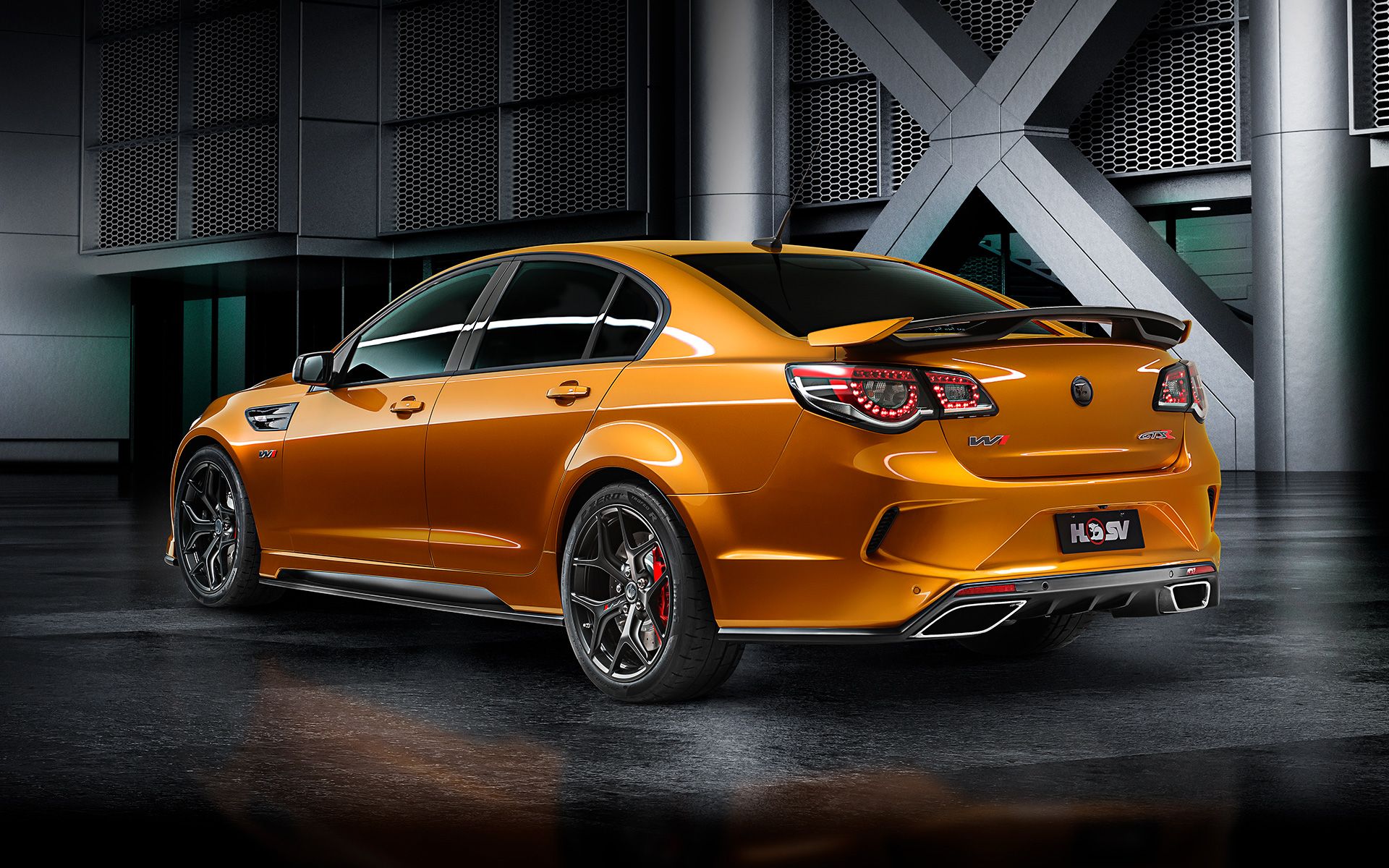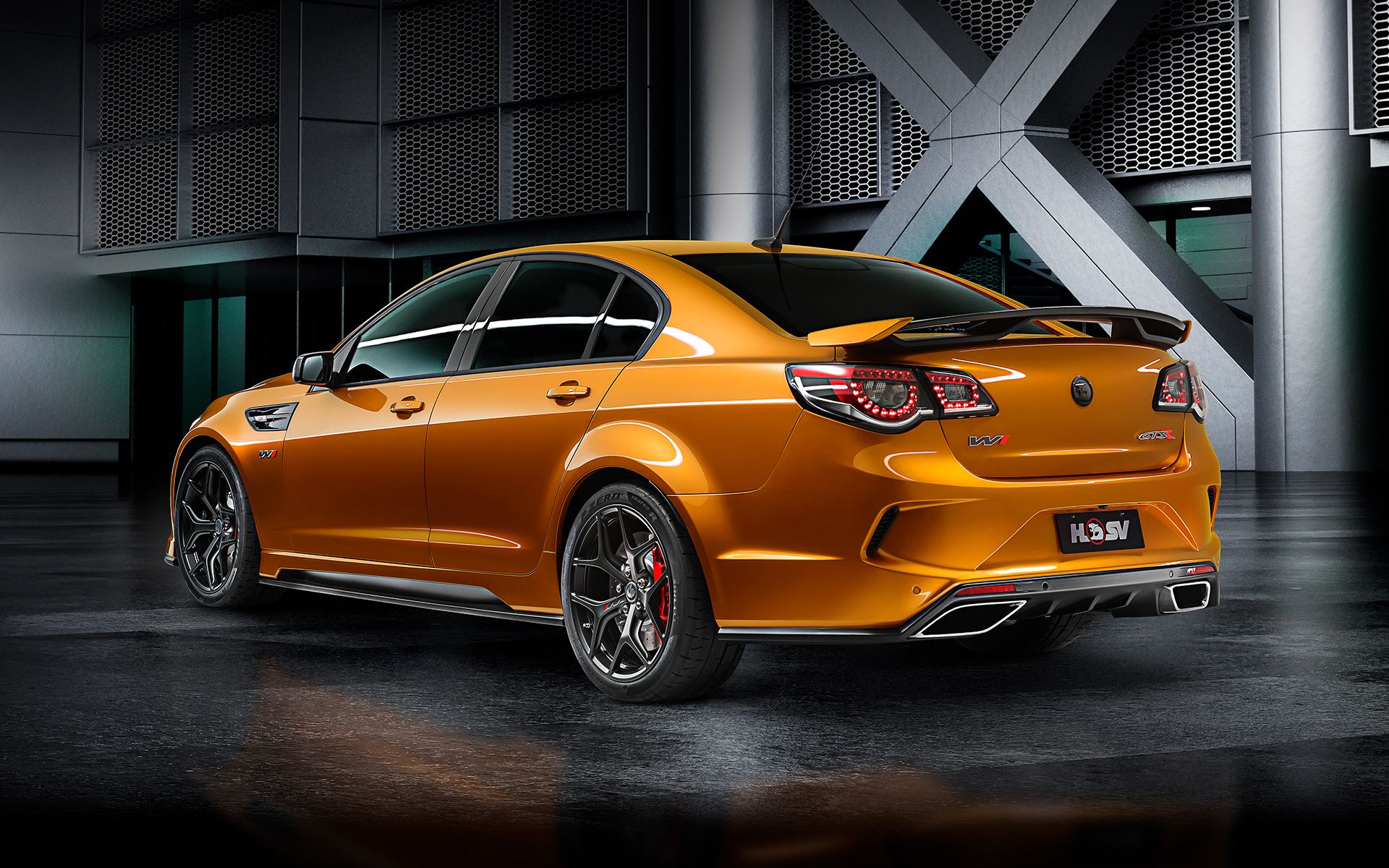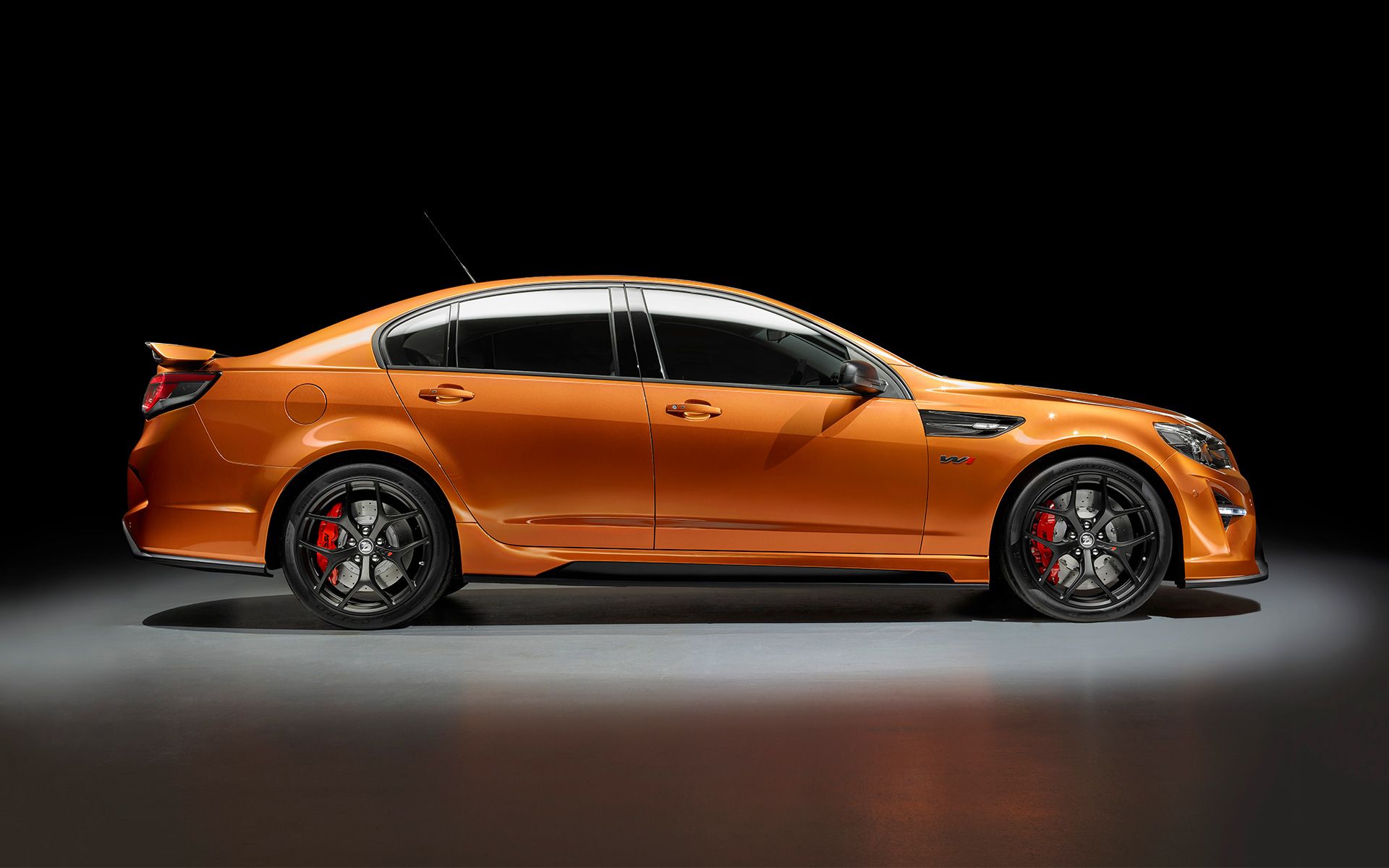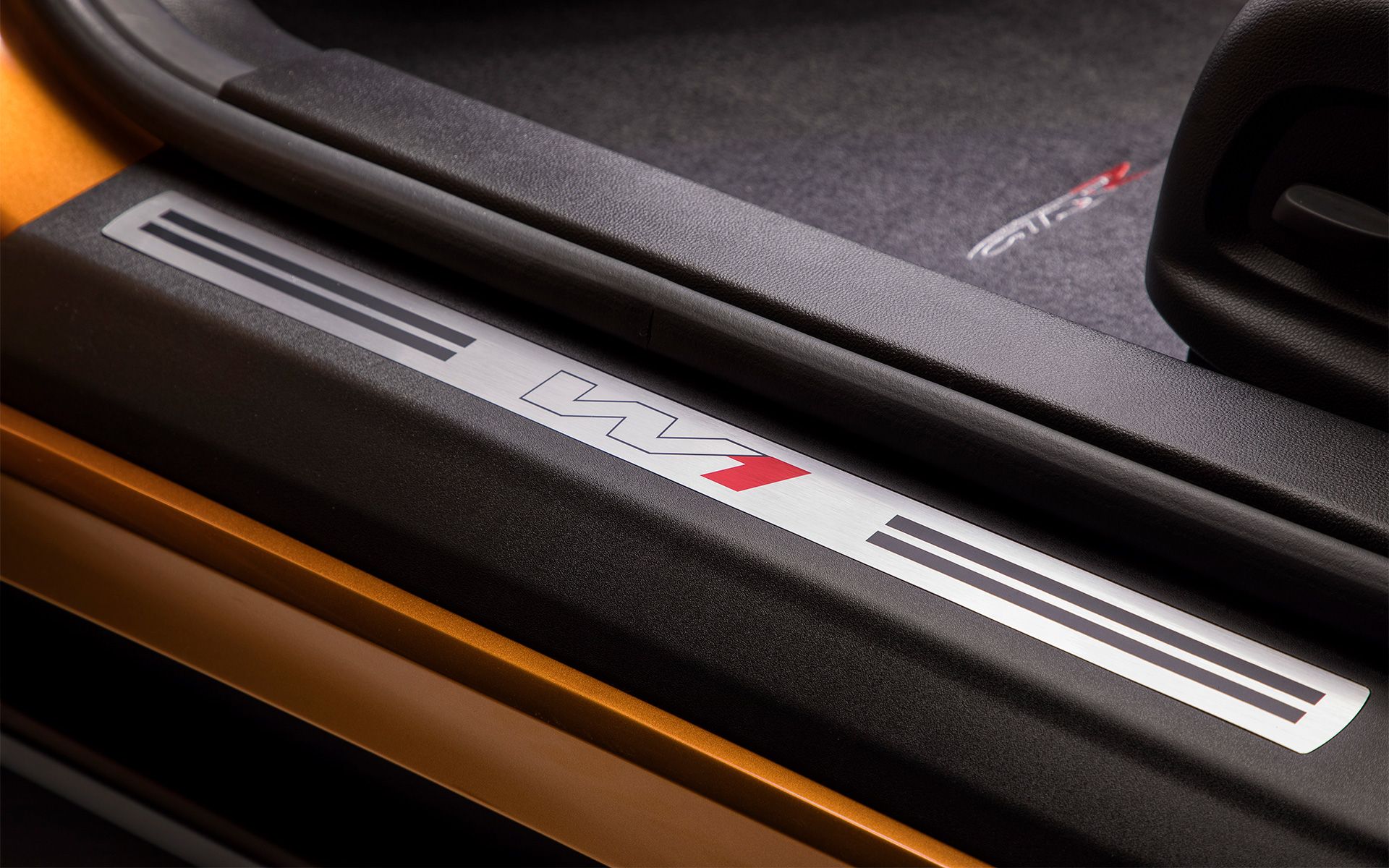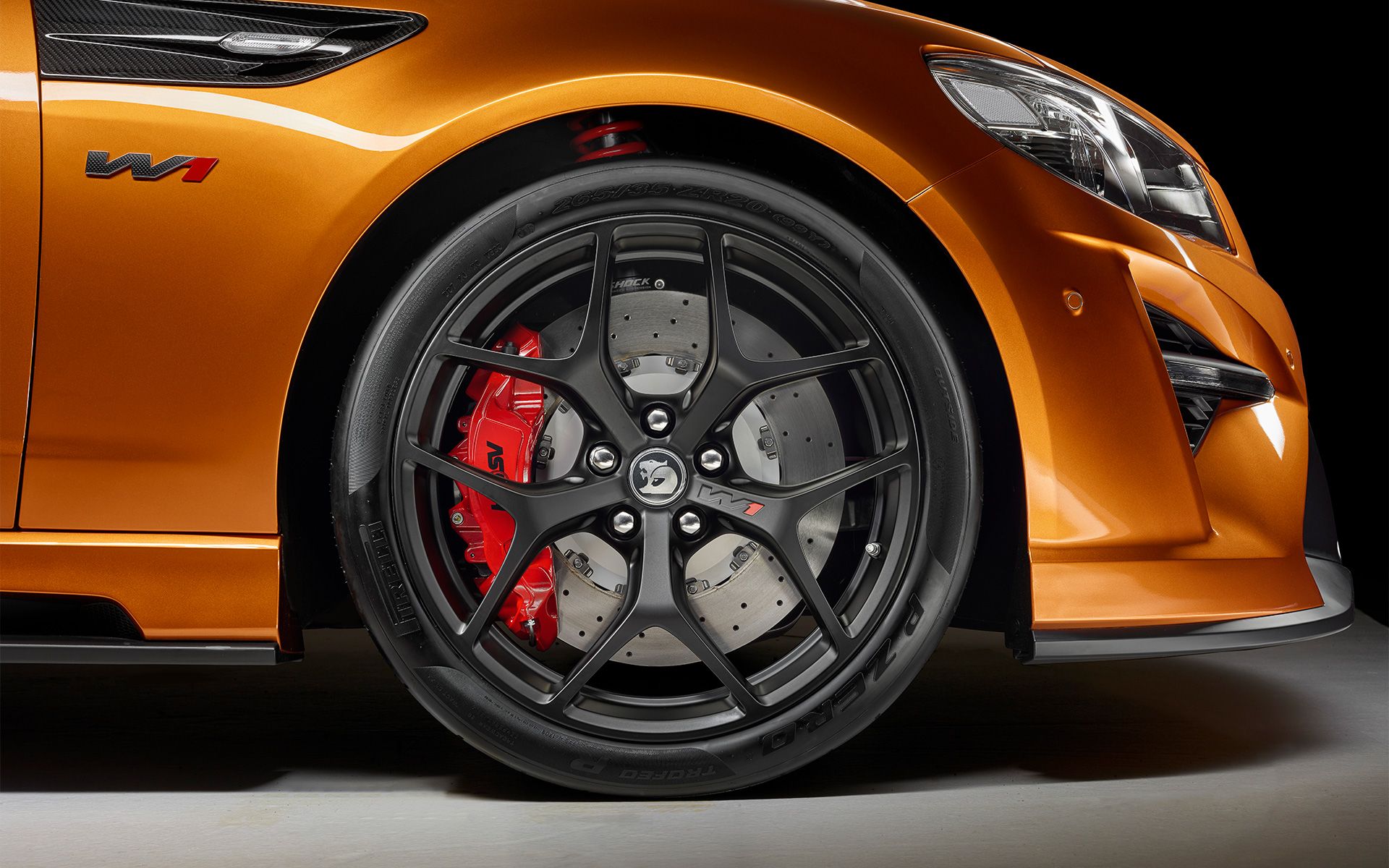As we already know, 2017 marked the end of the line for General Motors' Australian factories, which means that the Holden brand as we know it no longer exists. The Australian-built Commodore was discontinued after 40 years of production and replaced by a sedan based on the latest Opel Insignia. But before the VF-generation Commodore went into the history books, the folks over at HSV, Holden's high-performance division, launched one final special edition of the sedan. It's called the HSV GTSR W1, and it's the most extreme version of the Australian-made four-door.
Arguably the most interesting facts about the GTSR W1, besides the beefed-up exterior, can be found under the hood, where HSV dropped a supercharged, 6.2-liter V-8 LS9 that's very similar to the one in the previous Corvette ZR1. But power and torque aren't everything here. This sedan also features a wide range of track-prepped chassis components, as well as unique trim on the inside. What's more, it's limited to only a few hundred examples, which will definitely turn it into an expensive collectible in a few years. Let's find out more about it below.
Continue reading to learn more about the HSV GTSR W1
2017 HSV GTSR W1
- Make: Array
- Model: 2017 HSV GTSR W1
- Engine/Motor: V8
- Horsepower: 636
- Torque: 601
- [do not use] Vehicle Model: Array
Exterior
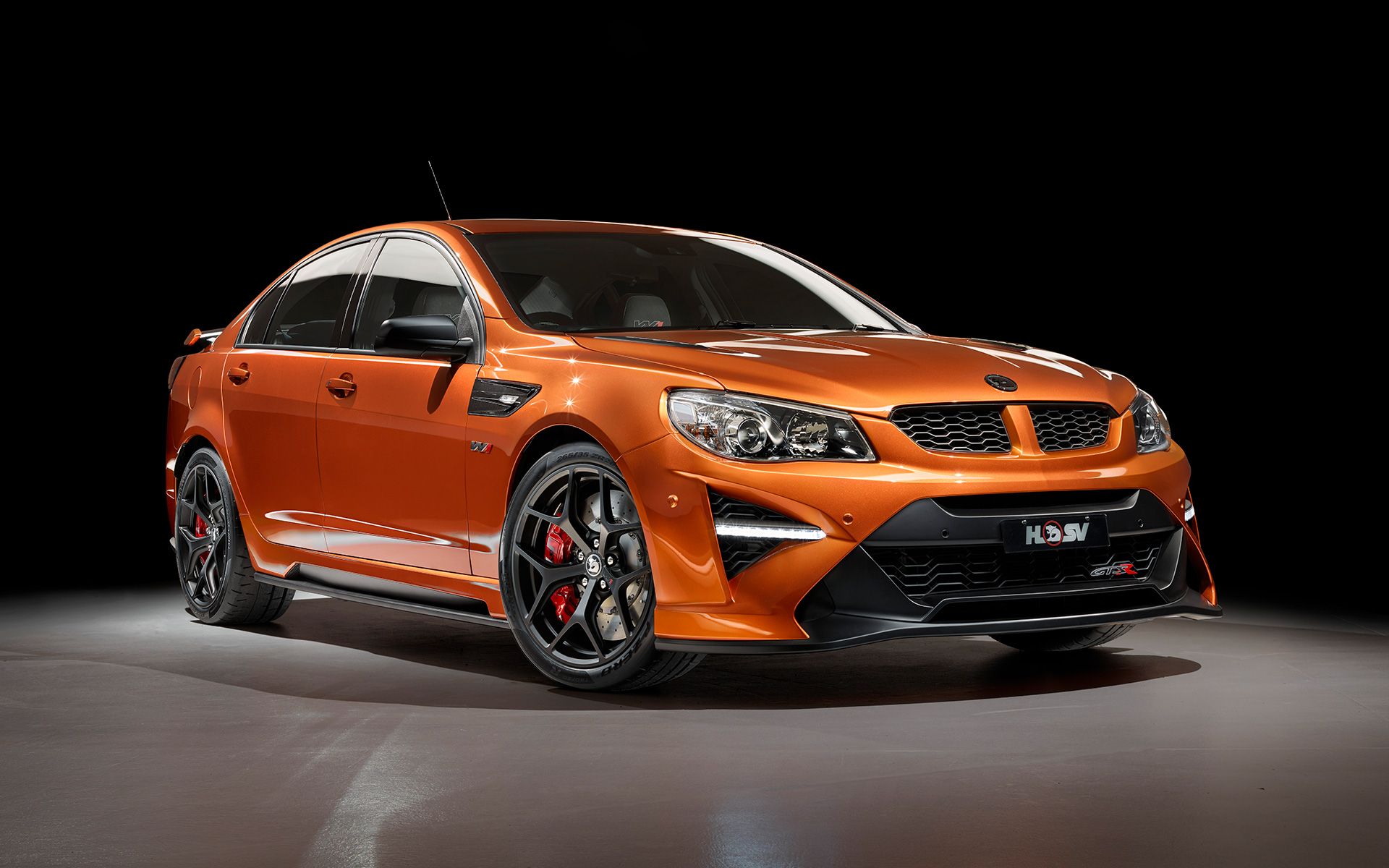
|
|
|
HSV GTSR W1 |
HSV GTS 25th Anniversary Edition |
The fact that the GTSR W1 is based on the HSV GTS is quite obvious, but this final iteration of the Gen-F2 sedan sports a number of modifications that make it unique. Up front, the headlamps, main grille, and engine hood were carried over unchanged from the GTS, but HSV reshaped the bumper almost entirely. The center grille is significantly thinner, while a slim opening sits just above the new splitter.
The mesh grille also ditched the honeycomb pattern in favor of a wavy configuration that adds width to the car. The side vents are definitely smaller than the GTS', but this doesn't make the W1 look bland by comparison. On the contrary, although smaller, the triangular outlets add a touch of aggressiveness to the bumper, which is further enhanced by the thin LED daytime running lights.
Moving onto the sides, there are fewer changes to talk about, but we can see new fender vents, wheels, and badges. The fender vents are now oriented horizontally, versus vertically on the GTS, and are made from carbon-fiber. Down below, there's a "W1" badge. The rims have a more intricate design with super thin spokes, while the calipers are finished in red for a strong contrast.
Around back, updates were made to mimic those seen up front. Specifically, the upper section remained unchanged (save for the new badges), while the bumper was reshaped and equipped with new features. Unlike the GTS, the W1 has a wider, trapezoidal license plate recess and vertical vents toward the corners. The diffuser is also new with three fins at the center, flanked by large, rectangular exhaust pipes on each side.
Interior
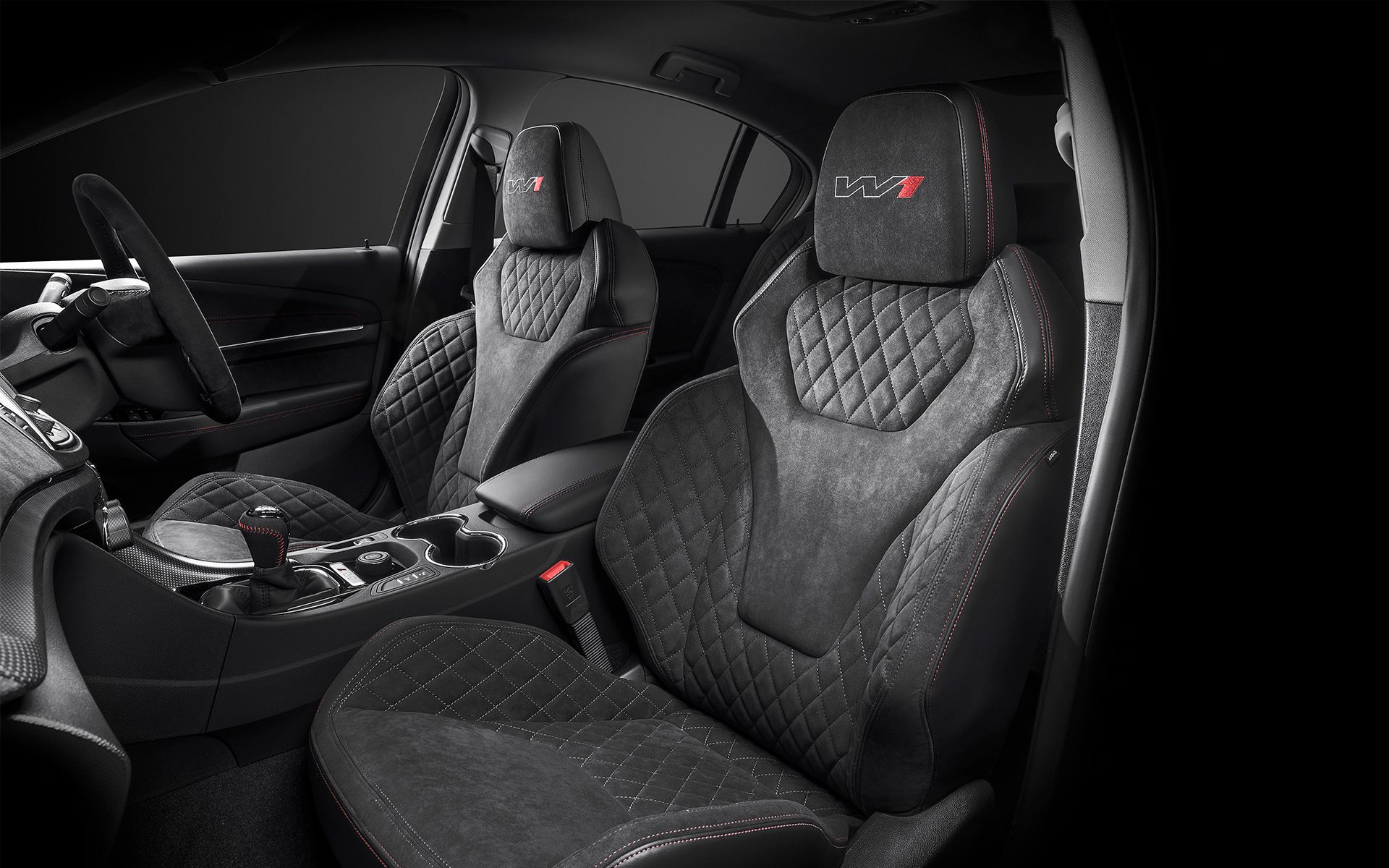
|
|
|
HSV GTSR W1 |
HSV GTSR W1 |
Inside, the W1 is also based on the GTS, but stands out from the pack thanks to a number of unique features. The sedan is equipped with "W1" door sills, "GTSR" floor mats, and bespoke race-type seats with heavy bolstering and "W1" logos on the headrests. The seats also feature diamond quilting and red contrast stitching. The center console and the instrument cluster are also unique to this model.
Standard features include steering wheel height and reach adjustment, Alcantara gear selector, four-button flip key, cruise control, and enhanced multifunction display with vehicle information menu, trip information, fuel economy, and warnings. Also, don't expect to find too much leather in this vehicle, as the seats and the dashboard are draped in Alcantara for a motorsport-inspired feel.
HSV GTS0}
As mention earlier, the W1 gets its juice from a supercharged, 6.2-liter LS9 V-8. Shared with the C6-generation Corvette ZR1, the massive mill pumps out 474 kW and 815 Nm of torque, which converts to a whopping 636 horsepower and 601 pound-feet. That's a significant 44 kW and 75 Nm (56 horsepower and 51 pound-feet) over the GTS and makes the W1 the most powerful car HSV has ever made.
But the engine isn't the only drivetrain feature that received updates.
The W1 also uses a limited-slip differential with a specific ratio and electronic torque vectoring, as well as a carbon-fiber airbox for improved cooling. The hi-flow exhaust system also carries x-pipe intermediate and bi-modal mufflers for enhanced performance. All the electronics, including ESC, ABS, EBD, EBA, and TCS have custom tuning, as does the race-ready Supashock suspension.
The sedan runs on 20-inch forged alloy wheels wrapped in Pirelli P Zero Trofeo R track tires, while stopping power comes from drilled two-piece discs with monoblock, six-piston calipers. Needless to say, the GTSR W1 is more than ready to score fast laps on Mount Panorama.
Drivetrain
The HSV GTSR W1 is priced from $169,990, which accounts for a $70,000 premium over the GTS. That's freakishly expensive to be honest, but given that this is the final HSV built in Australia, I'd say the brand won't have any issues selling all 300 units.
Prices
Back in the good old days, the Holden Commodore had its very own battle with the Australian-built Ford Falcon. Likewise, the beefed-up HSV models went against performance-oriented Falcons built by FPV, Ford's very own division in the country. Now that FPV no longer exists, the GTSR W1 is pretty much alone in this niche, simply because no other company offers an extreme sedan in Australia. Cadillac has yet to return to give customers to option to buy the CTS-V. What's more, the Corvette isn't available in the land of Down Under, so the prospect of owning a 650-horsepower Z06 is pretty far away.
Ford Mustang
As far as Ford goes, the only performance oriented vehicles you can buy from the Blue Oval are the Focus RS and the Mustang GT. The latter is powered by a 5.0-liter V-8 rated at 306 kW and 530 Nm of torque (410 horsepower and 391 pound-feet), which isn't the kind of output you're looking to compare to the GTSR W1. But at least you can get sub-five-second sprints to 60 mph in this car, which will have to do until Ford brings the GT350 or the future GT500 to Australia. Granted, it's only a two-door and not as comfortable for rear-seat passengers, but at least it can provide seating for four people. The good news is that the Mustang GT is significantly more affordable, starting from around $60,000 depending on where you live in Australia.
Find out more about the Ford Mustang here.
Mercedes-AMG E63
If you can't live with four doors and still need the performance, you can check out the Mercedes-AMG E63 S. However, this sedan not only is oriented toward the luxury market, which makes it more expensive, but it's also a tad milder when it comes to track-bred features. Simply put, it doesn't come with race-ready Pirelli tires and it's not as aggressive looking as its Australian sibling. The E63 S also gets its juice form a V-8, but this time around in the form of a turbocharged 4.0-liter unit. The engine cranks out 603 horsepower and 627 pound-feet of torque through a nine-speed automatic, with no option for a manual. Pricing for the E63 S starts from around AUD$250,000, quite a premium over the HSV GTSR W1.
Find out more about the Mercedes-AMG E63 here.
Conclusion
Where do I begin? Man, I really love this car. I haven't driven it and I'm pretty sure I will never get to do that, but I'm in love with it. Heck, it's the beefed-up Chevy SS we will never get in the U.S. and the perfect statement of what HSV is capable of nowadays. It's a bit sad that the Australian-built Commodore has to die, but at least it's getting a proper send-off. And you know what the best part is? This thing is also available in GTSR Maloo trim. Yup, the El Camino-style pickup truck/car thingy we also can't have in the States. Woof!


